
Related
Guests
- Deepak BhargavaDirector of the Center for “Community Change”: http://www.communitychange.org, a non partisan, national organization based in D.C. that is helping do voter registration around the country and raise awareness around issues of poverty. The organization was a sponsor and organizer of the forum on poverty and race held in Colombia, South Carolina this past Friday. All of the candidates, except Senator Joseph Lieberman who is campaigning in Delaware, answered questions from the audience, made up mostly of minority and low-income people.
- Jeremiah Johnsonreporter covering election news for KUNM community radio in Albuquerque, New Mexico
President Bush claimed in his 2002 State of the Union address that the U.S. discovered in Afghanistan detailed plans of U.S. nuclear plants. The Bush administration was forced to admit this week that the claim was not based on factual evidence after the Nuclear Regulatory Commission said there was no evidence any such plans were found in Afghanistan. [Includes transcript]
The Bush administration has been forced this week to admit that one of the most explosive claims of President Bush’s 2002 State of the Union address was not based on factual evidence.
Bush claimed that the U.S. has discovered in Afghanistan detailed plans of U.S. nuclear plants. On Monday night the White House told the Wall Street Journal that Bush’s statement admitted no such plans had ever been found.
This story has resurfaced this month after a commissioner on the Nuclear Regulatory Commission responded to an inquiry of Greenpeace and that the NRC was aware of no evidence that diagrams of nuclear plants had been found in Afghanistan.
- President Bush’s State of the Union address in 2002.
- Jim Riccio, Nuclear Policy Analyst for Greenpeace.
- Related Documents & Stories
Transcript
AMY GOODMAN: In a minute we’ll talk to Jim Riccio, who is a Nuclear Policy Analyst for Greenpeace, but first let’s go back to the 2002 Presidential State of the Union address.
PRESIDENT BUSH: “Our discoveries in Afghanistan confirmed our worst fears, and showed us the true scope of the task ahead. We have seen the depths of our enemy’s hatred in videos where they laugh about the loss of innocent life. And the depth their hatred is equaled by the madness of the destruction they design. We have found diagrams of American nuclear power plants and public water facilities, detailed instructions for making chemical weapons, surveillance maps of American cities, and thorough descriptions of landmarks in America and throughout the world. We have found in Afghanistan confirms that far from ending there, our war against terror is only beginning.”
AMY GOODMAN: That was President Bush’s 2002 State of the Union address. James Riccio of Greenpeace, what is wrong with that statement?
JIM RICCIO: Well what is right about that statement, Amy? Basically, we have had the N.R.C. commissioner confirm that there is absolutely no evidence or basis for that statement. A senior white house official has backed that up. In my mind, it’s a concern that, you know, the most highly scrutinized speech of the year has major inaccuracies in it. If this turns out to merely be the president attempting to rally America behind him, based upon fear mongering, I think we have a real problem on our hands.
JUAN GONZALEZ: Was there anything about the statement that had any semblance of fact?
JIM RICCIO: Not to our knowledge. I heard this rumor basically a year ago and I could not actually believe it was the case. And then when all of the other evidence in the speeches came to light, there wasn’t an attempt to purchase yellow cake uranium from Africa. There were no weapons of mass destruction found in Iraq, and now there are no American nuclear power plants designs found in Afghanistan. There seems to be a pattern developing here. And to my mind, there seems to be nothing to back this up.
AMY GOODMAN: What has the Bush administration done to protect nuclear power plants in this country?
JIM RICCIO: Well actually, it’s hard to say. Prior to 9-11, the nuclear industry had an abysmal safety record, and security record. They had failed the security drills approximately 50% of the time. Since 9-11, the Nuclear Regulatory Commission first canceled all of those drills. They have since restarted them, but everything is hidden under a cloak of secrecy. The public has no idea whether the nuclear industry has improved their performance or whether it’s maintained its mediocrity.
AMY GOODMAN: Finally, this statement George Bush’s, has not gotten a tremendous amount of scrutiny. There was the piece in the “Wall Street Journal” by Robert Block and Greg Hit that points out that the White House backed away from the Bush 2002 nuclear terror warning.
JIM RICCIO: No, it really hasn’t gotten a lot of attention just yet. I think it got buried underneath the fact that the Presidents’ service in the guard was being questioned so broadly. I think this hopefully will get some attention. I have been working with Congressional and Senatorial offices to get an answer to the question. If there was no basis for this, how did this get into the President’s speech? You know, if this is not the case, then, you know, why — why are American nuclear power plants, under threat? We realized they have been under there’s since 1993 after the World Trade Center was first attempted to be taken down. But at this point, we would at least like to know how this made it into the speech. This is unconscionable to me that this would be used as an attempt to rally the troops behind the President.
JUAN GONZALEZ: In terms of the attempts to improve security at the plants, to what degree has Government’s greater secrecy affected it’s ability to also monitor the functioning of these plants?
JIM RICCIO: It’s been very problematic. Because of 9-11, they have removed a lot of the information that the public needs in order to enforce the regulations on these reactors. Honestly, some of the stuff does not belong in the public realm, but the ability of the public to participate has been a foundation of the regulation of these reactors. Public participation has improved the safety and security. The Nuclear Regulatory Commission in fact tried to kill the security program after it had become an embarrassment to the industry. It was only some of my colleagues’ efforts to get this brought to light that reversed their course. You really need to shine a bright light on the Nuclear Regulatory Commission, and upon the nuclear industry if we’re going to improve the safety and security of these reactors.
AMY GOODMAN: The letter that you got from the Nuclear Regulatory Commissioner is very interesting. He quotes in response to your question about the basis of President Bush’s claim what Bush said, and ends by saying (this is Edward McGaffen, jr.,) “I urge this letter to again urge all who engage in debates about the safety or security of U.S. nuclear power plants to use accurate information in those debates.”
JIM RICCIO: Indeed. I’m thankful that the Commissioner stepped forward and set the record straight. To have this lying out there for several years, you know, a lot of my activists and citizens around these reactors were extremely concerned, whether it had been there reactor that had been targeted. At least we have removed that threat. Now, I’m not under the delusion that these reactors are not being targeted. You know, these reactors — and the sad thing about it is I really believe these reactors are indefensible. There’s so many things that can go wrong with these reactors, and if you have suicidal terrorists involved, it can be, you know…A couple of years ago an ex-mental patient armed with nothing more than a Chevy station wagon, was able to drive his station wagon into the Turbine Building at Three Mile Island. That was prior to 9-11. Had that been a truck bomb, or car bomb, you could have had the second meltdown at Three Mile Island.
AMY GOODMAN: Well Jim Riccio, I would like to thank you very much for being with us. Thank you.
JIM RICCIO: Thank you Amy, and thank you Juan.

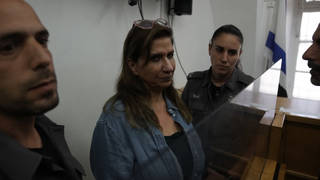
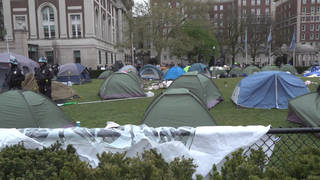
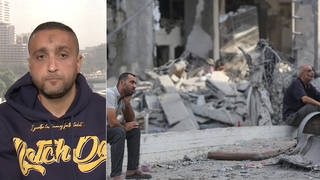
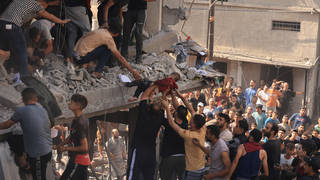





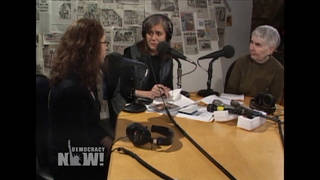

Media Options